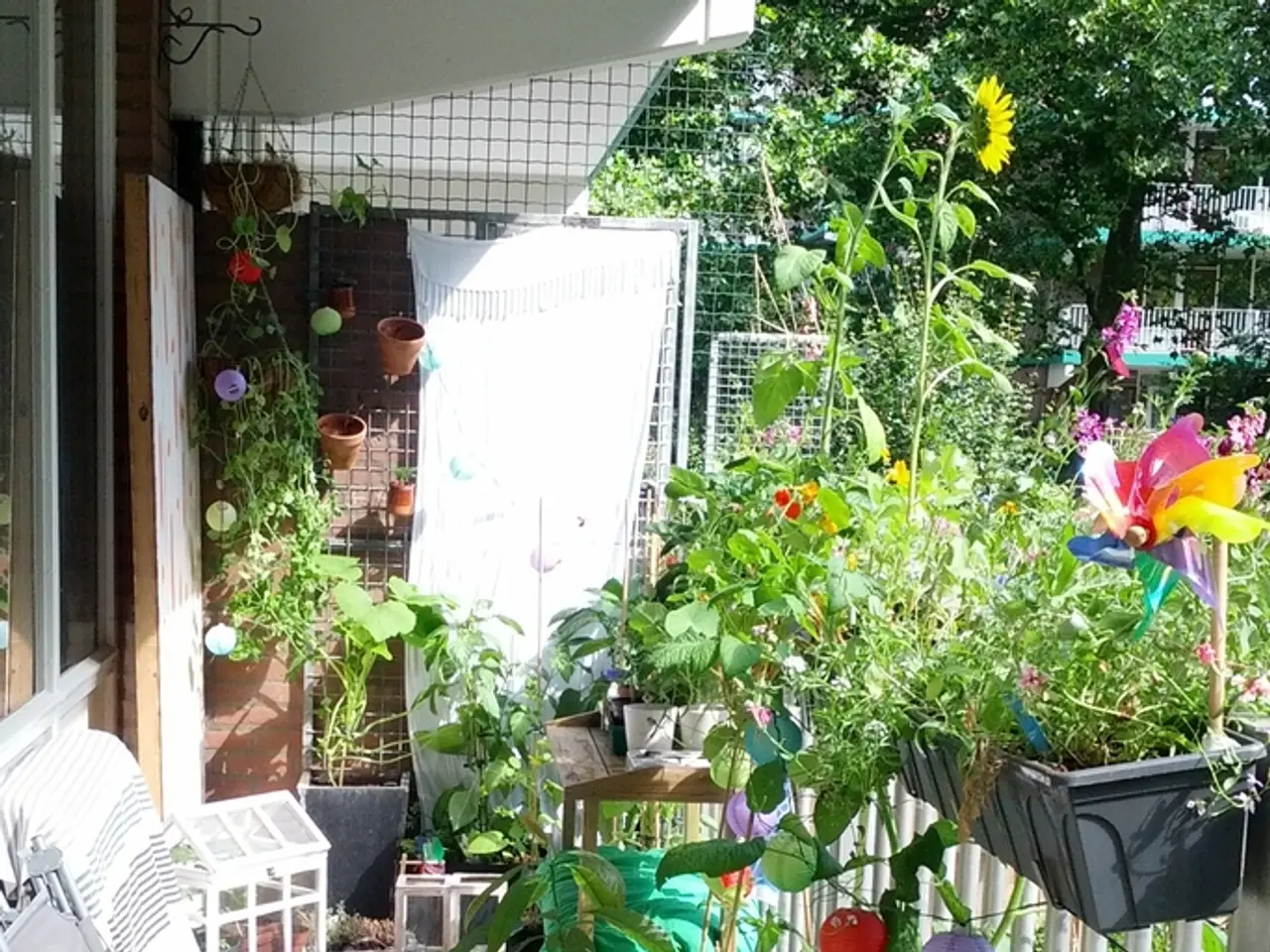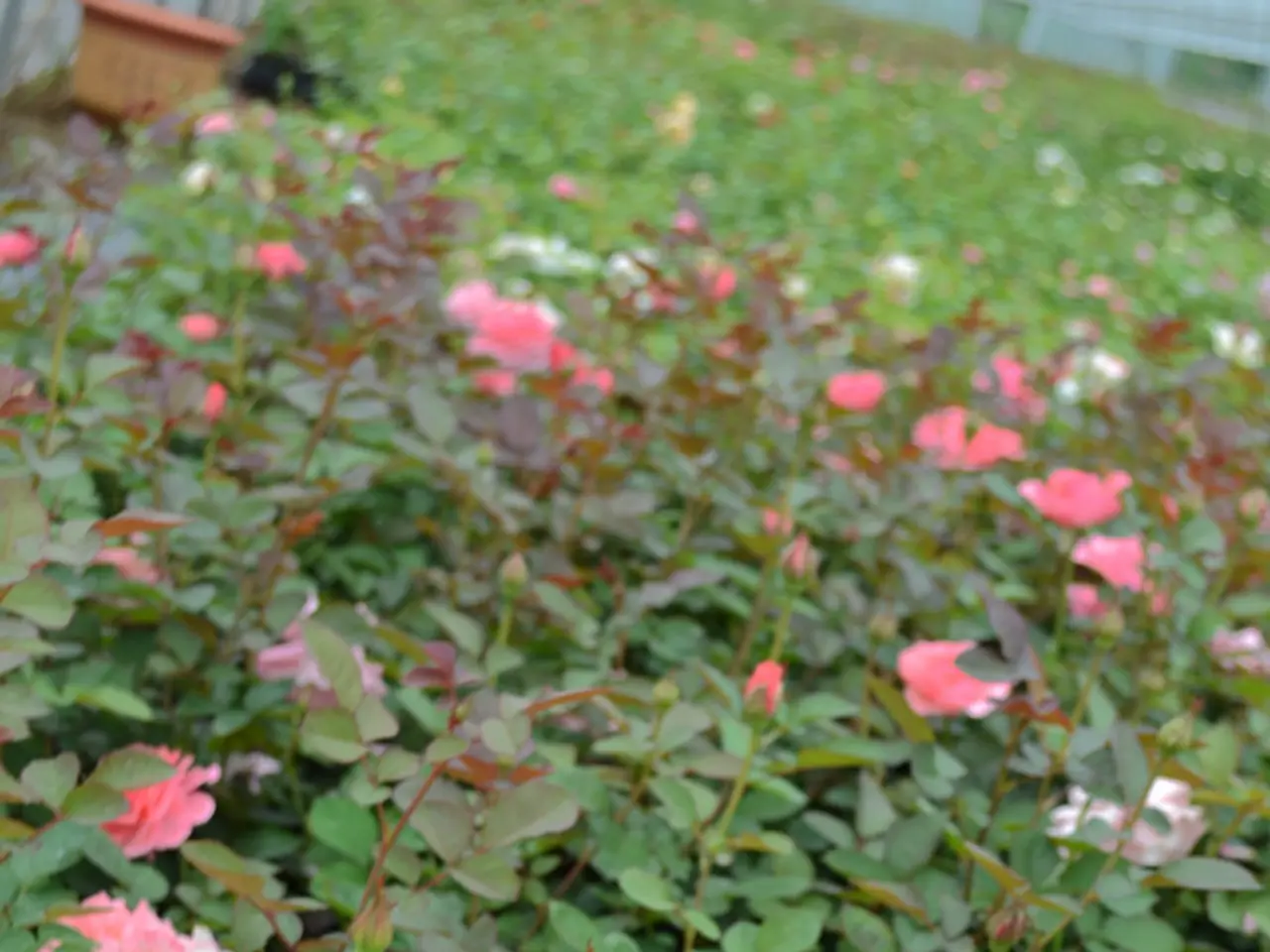Implementing No-Till Garden Techniques for Building a Novice's Garden Plot
No-till gardening is all the rage these days, and for good reason! It's a fantastic way to start an instant garden with minimal effort. Here's the lowdown on some no-till gardening methods to help you get started and choose the best one for your vegetable garden. Remember, the method you pick will depend on your soil surface, available materials, and personal preference.
What's the state of your soil?
Before deciding on a no-till method, it's essential to assess your existing soil. Do a simple soil test by digging a small hole. Compacted soil with large rocks may indicate poor soil quality, while sandy soil that's easy to dig isn't ideal either. In both cases, you might want to consider building a raised bed garden, like sheet mulch, hugelkultur, or the instant no-dig method.
If your soil is healthy or you're converting an existing garden to no-till for improved soil fertility, mulch methods could be the perfect choice for you. And if you're starting from scratch, even on a driveway, the square foot gardening method has got you covered!
Naturally replenishing your garden
Unlike traditional tilling, no-till gardening demands covering the garden with natural or organic matter. An annual mulch layer is a must-have, just like tilling was an annual event in the past. In time, as your no-till garden becomes established, it will need less and less material. Grass clippings, leaf mulch, and other organic materials can be used to maintain it. Read more about maintaining a no-till garden here.
When starting a new no-till garden, the layers of natural or organic soil-building materials you use will depend on what's readily available. A big compost pile or plenty of organic debris will help you build a lasagne garden or hugelkultur, while living in grasslands and having access to hay might make the Ruth Stout method a great pick. City dwellers might find no-dig methods more suitable.
No-till gardening methods
1. Sheet Mulch
With sheet mulching, you can create a productive garden no matter what's below the soil or plant roots. It's a fantastic method for converting hay or grass fields into gardens and for those battling rocks, sand, or clay soil. Layering organic materials, like brown cardboard, compost, manure, wood chips, leaves, and twigs, creates a loose, rich soil that will save you time and effort in the long run.
2. Hugelkulture
Perfect for those with lots of organic waste to dispose of, the hugelkulture garden involves building a mound (the word hugel means "hill" in German) by starting with old wood as a brown layer, followed by a green layer of manure, and then layers of soil and organic matter. The method isn't always feasible for home gardeners, as it can be labor-intensive. However, if you have a large property with heavy equipment, it could be a fun project!
3. Instant Soil Gardening
The most common no-till method used by gardening gurus, the instant compost topsoil garden is the quickest way to build a productive, long-lasting garden. This method involves starting with a layer of cardboard or newspapers, followed by a thick layer of compost or topsoil. A finishing layer of good-quality compost or finished soil helps seal the deal. Annually covering the soil with fresh compost or mulch ensures a thriving, weed-free no-till garden.
4. Square Foot Gardening
Remember Mel Bartholomew and his innovative square-foot gardening method? Instead of planting in long rows, you plant in squares, giving each plant just enough room to grow. Any garden can benefit from this method, whether sheet mulched or not. If you're intrigued, you can learn more by reading Mel's books or checking out our in-depth guide.
Don't forget to subscribe to our website and follow us on Facebook, Twitter, Pinterest, or Instagram for the latest updates on no-till gardening and other gardening tips!
Best Wishes!
Yourfriendlygardenpartner
Additional Information:
- No-Till Gardening: A Comprehensive Guide
- 10 Common Myths About No-Till Gardening Debunked
- How to Start a Successful No-Till Garden: A Step-by-Step Guide
- For those with poor soil quality, consider building a raised bed garden like sheet mulch, hugelkultur, or the instant no-dig method as a solution.
- To maintain a healthy no-till garden, an annual mulch layer is essential, and grass clippings, leaf mulch, and other organic materials can be used.
- The sheet mulch method is ideal for converting grass fields into gardens and managing rocks, sand, or clay soil without tilling.
- If you have a large amount of organic waste, the hugelkulture garden method might be suitable for you, involving building a mound with old wood, manure, soil, and organic matter.
- The most common no-till method is the instant compost topsoil garden, which consists of a layer of cardboard or newspapers, a thick layer of compost or topsoil, and a finishing layer of good-quality compost or finished soil.
- The square foot gardening method, popularized by Mel Bartholomew, allows you to plant in squares instead of long rows, giving each plant enough room to grow.
- Despite common myths, no-till gardening can work well in cold climate regions, and with the right methods, you can have a thriving home-and-garden lifestyle using no-till techniques in your organic garden.






